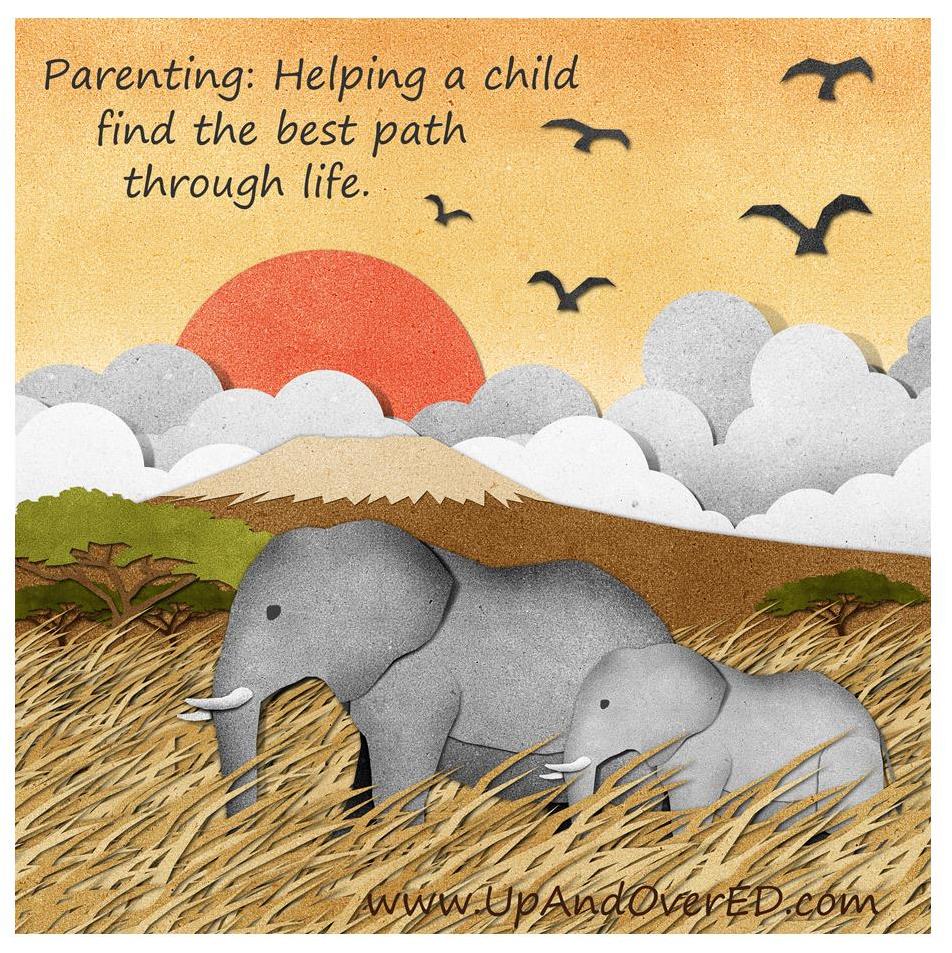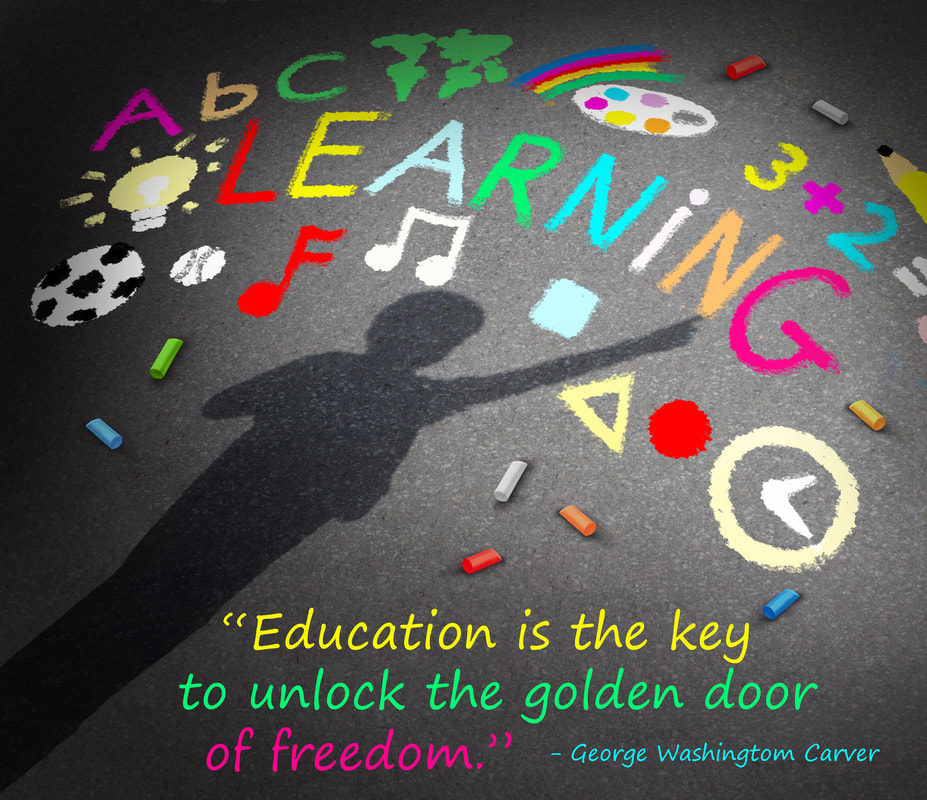| A new school year is about to begin! After thirty years of parenting, homeschooling and tutoring, I still feel like the year actually begins when school is back in session. It is a time to switch gears, form new habits and aim for changes that lead to successfully reaching goals. But how? This summer, I read the book Switch: How to Change Things When Change is Hard by Chip and Dan Heath. The authors present ideas that can be applied to students in school as well. |
The premise of their book is that our decision making is controlled by both rational side and our emotional side, and we need tools to be able to appeal to both sides to make changes.
Jonathan Haidt, author of The Happiness Hypothesis explains it this way. He says that our emotional side is an Elephant and our rational side is the Elephant’s Rider. The Rider seems to be the one in control since the Rider holds the reins. But the Elephant is much larger, and when the Rider and Elephant do not agree on which direction to go, the emotional-side Elephant is going to win.
While the Rider is the long-term thinker who is in charge of planning and direction, the Elephant is source of love, loyalty, sympathy and compassion. But the elephant is also the one who wants immediate gratification, and when there is a choice between an ice cream today or better health next month, the Elephant will choose the ice cream every time.
Jonathan Haidt, author of The Happiness Hypothesis explains it this way. He says that our emotional side is an Elephant and our rational side is the Elephant’s Rider. The Rider seems to be the one in control since the Rider holds the reins. But the Elephant is much larger, and when the Rider and Elephant do not agree on which direction to go, the emotional-side Elephant is going to win.
While the Rider is the long-term thinker who is in charge of planning and direction, the Elephant is source of love, loyalty, sympathy and compassion. But the elephant is also the one who wants immediate gratification, and when there is a choice between an ice cream today or better health next month, the Elephant will choose the ice cream every time.
| So it is important to help both the rational mind “Rider” and the emotional mind “Elephant.” Here are ways to help your student’s Rider: 1. Provide Clarity: Sometimes when a student cannot complete an assignment, it is because the Rider does not know exactly where it is supposed to go. Students can check with their teacher or fellow students to make sure they correctly understand the expectations. A parent or tutor can also help clarify concepts and academic material. 2. Limit the Number of Decisions a Student Needs to Make: Self-control is a limited resource, and when a student is tired and |
overwhelmed, the Rider does not have much of a chance to change to the Elephant’s direction. (And that Elephant does not want to do the difficult homework assignment.)
3. Look for Bright Spots: Discover what is working and help the student focus on more of that. Usually when a parent sees a report card that says their child earned four “A”’s and one “F”, the parent spends most of the discussion time on the “F.” But an interesting twist would be to explore what the student did to make the “A”’s possible and encourage them to figure out how to replicate that in other classes.
4. Create a Destination Postcard: Make a mental and verbal picture of what the end goal will be. Standing here a year from now, what do you want to have accomplished? What kind of person will you have become? What new skills will you have acquired? Get a picture of that now, and then head in that direction.
5. Script Moves: Have a steady habit of times and places where achieving goals can happen. A designated desk where school work it done and a certain time slot every day that is set aside to complete that work can help.
The Elephant needs help too.
1. Find the Feeling: The Elephant may know that getting good grades is a logical thing to do, but it means a lot more if a student can connect their feelings and identity to what they do in school. If they ask themselves questions like “What kind of person am I?” and answer that with, “I am a
3. Look for Bright Spots: Discover what is working and help the student focus on more of that. Usually when a parent sees a report card that says their child earned four “A”’s and one “F”, the parent spends most of the discussion time on the “F.” But an interesting twist would be to explore what the student did to make the “A”’s possible and encourage them to figure out how to replicate that in other classes.
4. Create a Destination Postcard: Make a mental and verbal picture of what the end goal will be. Standing here a year from now, what do you want to have accomplished? What kind of person will you have become? What new skills will you have acquired? Get a picture of that now, and then head in that direction.
5. Script Moves: Have a steady habit of times and places where achieving goals can happen. A designated desk where school work it done and a certain time slot every day that is set aside to complete that work can help.
The Elephant needs help too.
1. Find the Feeling: The Elephant may know that getting good grades is a logical thing to do, but it means a lot more if a student can connect their feelings and identity to what they do in school. If they ask themselves questions like “What kind of person am I?” and answer that with, “I am a
hard worker” and “I am dependable” and “I get things done,” then the good grades can follow.
2. Shrink the Change: Baby steps are important. Big changes come from a succession of small changes.
3. Catch Them Being Good: Praising for good work has more power than yelling at them for bad.
The last thing the authors of Switch recommend is to provide ways to “Shape the Path.”
2. Shrink the Change: Baby steps are important. Big changes come from a succession of small changes.
3. Catch Them Being Good: Praising for good work has more power than yelling at them for bad.
The last thing the authors of Switch recommend is to provide ways to “Shape the Path.”
| 1. Change the Environment: Not all students can study at home. (Libraries and other quiet places may work better.) Not all school situations are right for all students. (There are a lot of school options available.) You can make changes to your student’s physical environment that makes it more possible for them to succeed. 2. Build New Habits: It is debatable whether or not it takes twenty-one days to form a new |
habit, but doing something consistently for twenty-one days is a good place to start. A key component in forming a new habit is to have an accountability partner.
3. Remove Friction: The more a parent can smooth out the learning process, the easier it is for a student to succeed. Sometimes this means getting extra help for the student.
4: Put Up Signs That Say You Are Close: Celebrate Baby Steps! Have a party or a dinner out when your student forms a new habit or accomplishes a new goal. When I tutor, I sometimes create checklist charts so that students can see the progress they are making day by day and week by week. Just seeing that there is progress being made can be inspiring. (Remember opening the little doors on an advent calendar when you were a kid? It was exciting to see how much closer you were getting to the goal of Christmas!)
3. Remove Friction: The more a parent can smooth out the learning process, the easier it is for a student to succeed. Sometimes this means getting extra help for the student.
4: Put Up Signs That Say You Are Close: Celebrate Baby Steps! Have a party or a dinner out when your student forms a new habit or accomplishes a new goal. When I tutor, I sometimes create checklist charts so that students can see the progress they are making day by day and week by week. Just seeing that there is progress being made can be inspiring. (Remember opening the little doors on an advent calendar when you were a kid? It was exciting to see how much closer you were getting to the goal of Christmas!)
| Change is hard. For all of us – students and parents alike - it is a battle between our rational mind and our emotional mind. But coming up with a concrete plan and understanding that we need to feel the importance of making changes can make a difference. In the end, you need to show the Rider where to head and the Elephant why it is worthwhile. Wishing you joy on the journey, Debra Newby www.UpandOverED.com |
P.S. I highly recommend Switch as a book for everyone who is trying to make positive changes in life or in the lives of their families. The book is full of interesting stories and examples on how to make changes so you can switch directions in your life.
Debra Newby is a credential teacher in biology and chemistry, an academic tutor, a life coach and a parent mentor on California’s Central Coast. If you would like more information on the ways she can help you navigate the adventure of raising children, please contact her at [email protected]
Debra Newby is a credential teacher in biology and chemistry, an academic tutor, a life coach and a parent mentor on California’s Central Coast. If you would like more information on the ways she can help you navigate the adventure of raising children, please contact her at [email protected]




 RSS Feed
RSS Feed
